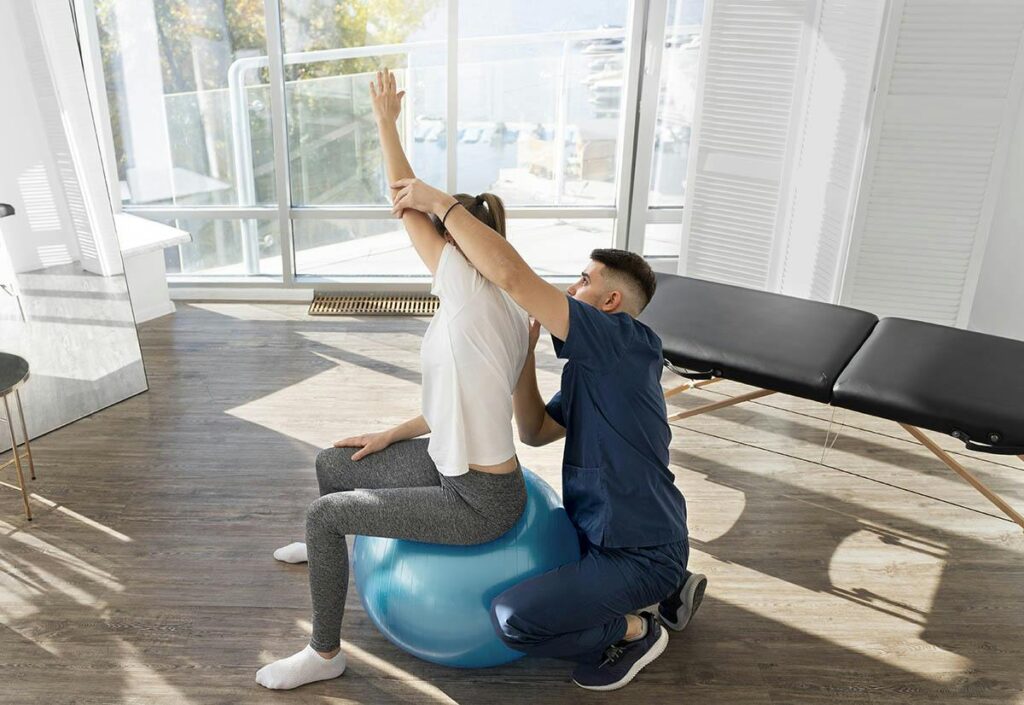Introduction
Lower back pain is a pervasive issue, affecting a significant portion of the population at some point in their lives. Whether it stems from poor posture, sedentary lifestyles, or incorrect lifting techniques, the discomfort can be debilitating. However, physiotherapy exercises have been proven to alleviate lower back pain effectively. As a Doctor of Physical Therapy, I’m here to share five essential exercises that can strengthen your lower back, improve flexibility, and reduce pain. Incorporating these exercises into your daily routine can help manage lower back pain and enhance your overall quality of life.
1. Pelvic Tilts
Pelvic tilts are a gentle way to warm up your lower back and engage your core, providing relief and flexibility.
- How to Do It:
- Lie on your back with your knees bent and feet flat on the floor.
- Flatten your lower back against the floor by gently contracting your abdominal muscles and tilting your pelvis towards your heels.
- Hold for 5 seconds, then relax.
- Repeat 10-15 times.
2. Knee-to-Chest Stretches
This stretch helps relieve tension and tightness in the lower back by stretching the glutes and hamstrings.
- How to Do It:
- Lie on your back with your knees bent and feet flat on the ground.
- Bring one knee towards your chest, holding your shin to gently pull the knee closer.
- Hold for 20-30 seconds, feeling a comfortable stretch in your lower back and buttocks.
- Repeat with the other leg.
- Do 2-3 repetitions for each leg.
3. Cat-Cow Stretch
The Cat-Cow stretch enhances spine flexibility and eases tension in the torso, shoulders, and neck.
- How to Do It:
- Start on your hands and knees, with your wrists directly under your shoulders and your knees under your hips.
- Inhale, arching your back and tilting your head and tailbone up towards the ceiling (Cow position).
- Exhale, rounding your spine outward, tucking your chin to your chest, and drawing your pelvic floor forward (Cat position).
- Move smoothly between these positions for 1-2 minutes.
4. Bird-Dog
The Bird-Dog exercise improves balance, strengthens the core, and supports lower back stability.
- How to Do It:
- Begin on your hands and knees, with your hands directly under your shoulders and your knees under your hips.
- Extend one arm forward and the opposite leg back, keeping both parallel to the floor.
- Hold for a few seconds, then return to the starting position.
- Repeat 10 times on each side, alternating arms and legs.
5. Bridge Exercise
Bridges strengthen the gluteus maximus, which supports the lower back during daily activities.
- How to Do It:
- Lie on your back with knees bent, feet flat on the floor, and arms by your sides.
- Lift your hips towards the ceiling, forming a straight line from your shoulders to your knees.
- Hold for 10-15 seconds, then slowly lower your hips to the floor.
- Repeat 10-15 times.
Conclusion
Dealing with lower back pain can be challenging, but incorporating these physiotherapy exercises into your daily routine can offer significant relief. Remember, consistency is key to seeing improvements. Always consult with a healthcare professional or physical therapist before starting any new exercise program, especially if you’re dealing with chronic back pain or have had a recent injury. With the right approach, you can manage your lower back pain and enjoy a more active, pain-free life.
References and Further Reading
For more detailed guidance on these exercises or additional physiotherapy techniques for managing lower back pain, numerous resources are available, including healthcare websites, physical therapy textbooks, and instructional videos. Personalized advice from a physical therapist can also ensure that your exercise program is tailored to your specific needs, maximizing the benefits for your lower back health.

